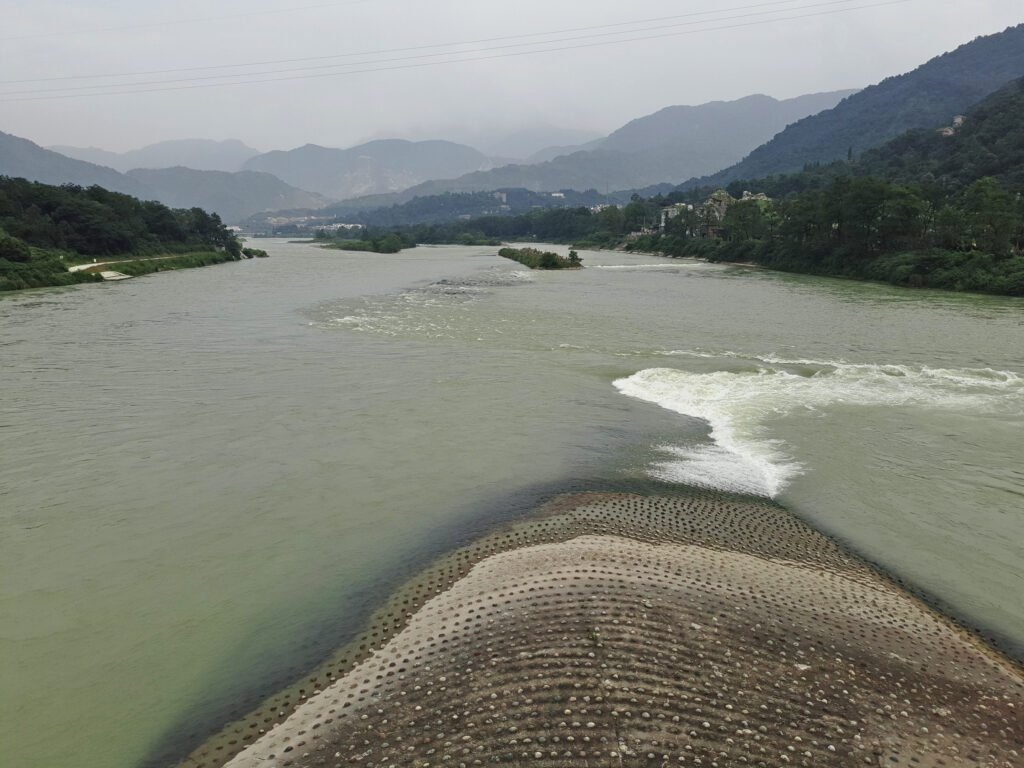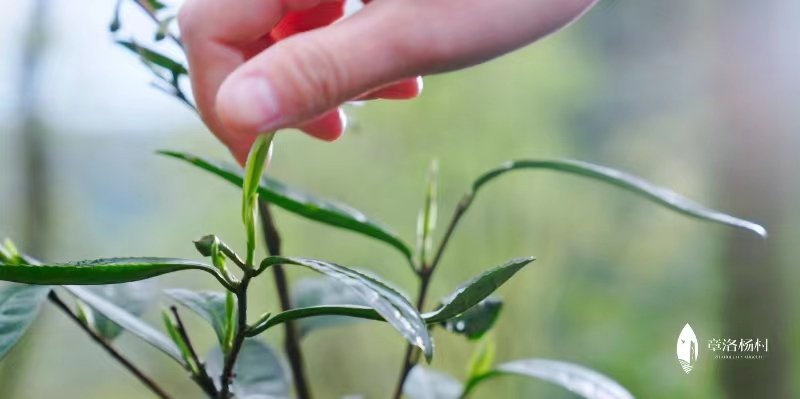
1、 The curtain of a legendary life begins
Li Bing, a legendary figure of the Warring States period in China, embarked on his magnificent journey of water control in Shu County during the Qin Dynasty. He was proficient in astronomy and geography and was appointed as the governor of Shu County by King Zhao of Qin. At that time, Shu Commandery was plagued by frequent floods and droughts, and the flooding in the Minjiang River Basin became a huge obstacle to the survival and development of Shu. The ancient Shu Kingdom had two large-scale water control activities, but the effect was minimal. After taking office, Li Bing deeply understood the urgency and importance of water management. With a profound understanding of astronomy and geography, he began a systematic water management project. He personally led the people to conduct on-site inspections along the banks of the Minjiang River, to understand the water situation, terrain, and other conditions, and formulated a detailed plan for the governance of the Minjiang River. Li Bing found that the head of the diversion project dug by Kaiming was unreasonable, and resolutely abolished it. He moved the diversion outlet of Dujiangyan Irrigation Project up to Yulei Mountain in Guanxian County, the top of the alluvial fan in the Chengdu Plain. This decision ensures a large amount of water diversion and lays the foundation for the formation of a smooth canal network. With outstanding leadership skills and firm determination, he led the people of Shu to launch an arduous struggle against floods, laying a solid foundation for the prosperity and development of Shu.

2、 The heroic feat of controlling water creates brilliance
(1) Dujiangyan Irrigation Project: handed down project
The construction of Dujiangyan Irrigation Project has a profound background. In ancient Shu, there were either floods or droughts, and water disasters seriously affected the lives and agricultural production of the local people. After fully investigating the topography and water potential, Li Bing chose to build Dujiangyan Irrigation Project at the Yulei Mountain Pass. The unique terrain here is extremely advantageous for the construction of water conservancy projects, as it allows for water diversion without dams.
Dujiangyan Irrigation Project consists of Yuzui Diversion Dam, Feisha Weir and Baopingkou as the key headworks. Yuzui divides the Minjiang River into an inner river and an outer river. The inner river is used for irrigating the Chengdu Plain, while the outer river is used for flood discharge. Feisha Weir can not only release floodwaters during flood periods, but also utilize the vortex effect of water flow to reduce sediment accumulation. The shape of the bottle mouth resembles a bottleneck, not only for water intake, but also for controlling the inflow rate.
Dujiangyan Irrigation Project has great influence. It has achieved multiple functions such as flood control, irrigation, and navigation. Since more than 2000 years ago, it has irrigated up to 668700 hectares of farmland, making the Chengdu Plain a “land of abundance” with abundant water and drought for thousands of miles. It has become a model of water control projects in China, praised as a “living water conservancy project”, and included in the The World Heritage List in November 2000.

(2) Tuojiang River System Management
After managing the Minjiang River, Li Bing also started to manage the Tuojiang River system. He came to Gaojingguan in Shifang to “guide Luotong Mountain” and build the Luokou Dam water conservancy project. The frequent occurrence of Luo River floods here poses a serious threat to agricultural production and the safety of people’s lives. Our tea mountain is located on the mountain of Gaojingguan.
Li Bing used the method of “burning with fire and striking with water” to chisel open Gaojingguan. Revisit the fish mouth, also known as Luoyi, and divide the upstream tributary of the Tuojiang River, the Luoshui River, into the Outer River and the Inner River. The outer river is used for flood discharge, while the inner river is used for irrigation. The lower section includes Zhuyan, Liyan, and Huoyan. The completion of the Luokouyan Water Conservancy Project has solved the problem of water disasters in the central and northern parts of the Chengdu Plain, and the downstream areas of Shifang, Mianzhu, Guanghan, Xindu, Jintang, and Qingbaijiang are no longer plagued by floods.
Li Bing’s management of the Minjiang River and Tuojiang River systems fully demonstrates his outstanding water management skills and sense of responsibility for the well-being of the people. His achievements not only brought prosperity to the Shu region at that time, but also left valuable cultural heritage and water management experience for future generations.

3、 Water management concept and wisdom
The core connotation of Li Bing’s water management concept
Li Bing’s water management adheres to the principle of “taking advantage of the situation, adapting to the times, and adapting to local conditions”, fully demonstrating his profound understanding and respect for natural laws. The so-called ‘taking advantage of the situation and guiding accordingly’ means not violating natural laws, fully respecting and utilizing natural laws, and seeking human survival and development. During the process of water control, Li Bing showed a tendency to follow the flow and guide according to the situation. He built Dujiangyan Irrigation Project at Yulei Mountain Pass, which has good mountain shape, geographical location and water potential. It is the natural height drop that drives the natural potential.

The wisdom of Li Bing’s water management work lies in his deep cleaning of beaches and low water weirs. After surveying the terrain and topography of Shu, Li Bing believed that water control in Shu requires weirs. If weirs are not built, the water will not be restrained and will flood freely. Low level embankment refers to the restoration of embankments that should conform to the old scale and should not be built high, otherwise the embankment will not play a role in flood discharge and sediment discharge during the flood season, but will instead pose a threat to the Neijiang Irrigation Area; But it cannot be too low, as it does not have the effect of blocking and diverting water. Before repairing the dam, it is necessary to first excavate the accumulated sand, gravel, and pebbles in the riverbed, otherwise the water flow will not be smooth and it is easy to break the dam. But deep excavation is not necessarily better, but rather to ensure smooth water flow. If the excavation is too deep, it may cause the foundation of the dam to shift or even collapse, causing new blockages in the riverbed.
Water management strategy primarily focused on diversion

Li Bing’s water management mainly focuses on dredging, dredging natural and existing waterways, excavating and opening new waterways to achieve the purpose of flood discharge and irrigation. For example, during the construction of Dujiangyan Irrigation Project, he divided the Minjiang River into the inner river and the outer river through the Yuzui water diversion dike. The inner river is used for irrigation of the Chengdu Plain, and the outer river is used for flood drainage. Feisha Weir utilizes the vortex effect of water flow to reduce sediment accumulation during flood periods, while also serving as a spillway. The shape of the bottle mouth resembles a bottleneck, not only for water intake, but also for controlling the inflow rate. This water management strategy, which focuses on diversion, not only effectively solves the problem of water disasters, but also achieves multiple functions such as flood control, irrigation, and navigation, reflecting the traditional water management philosophy of harmonious coexistence between humans and nature.
Reasonable layout of water conservancy projects
In the process of water control, Li Bing reasonably laid out water conservancy projects, fully considering natural factors such as terrain and water conditions. The three main works of Dujiangyan Irrigation Project, namely, the Fish Mouth Diversion Dike, the Flying Sand Weir and the Baopingkou, are interdependent, complementary in function, ingenious in cooperation, and integrated, forming a system project with reasonable layout. Jointly play an important role in diversion and sand separation, flood discharge and sand removal, and water diversion and sand removal, ensuring that there is no shortage of dry water and no flooding during floods. Scientifically solved problems such as automatic diversion of river water, automatic sand discharge, and control of inflow flow.
In addition, Li Bing also used the method of “burning fire and striking water” to manage the Tuojiang River system, chiseling open Gaojingguan and repairing the fish mouth, namely Luojian, to divide the upstream tributary of the Tuojiang River, Luoshui, into outer and inner rivers. The outer river is used for flood discharge, while the inner river is used for irrigation. The lower section includes Zhuyan, Liyan, and Huoyan. This reasonable layout of water conservancy projects fully demonstrates Li Bing’s outstanding water management talent and wisdom.

4、 Profound influence and historical significance
Li Bing’s achievements in water management have had a profound and lasting impact on the Chengdu Plain. The Dujiangyan Irrigation Project Water Conservancy Project and the Tuojiang River system under his leadership have transformed the Chengdu Plain from a land of floods to a “land of abundance”. Here, the fertile land stretches for thousands of miles, agriculture is developed, and the people’s lives are prosperous. The Chengdu Plain has become an important grain producing area in China, providing a solid guarantee for the country’s stability and development.
Li Bing was honored as the “Master of Sichuan” by Shu people for his outstanding achievements in water control, and the Erwang Temple was built at the foot of Yulei Mountain in Dujiangyan Irrigation Project as a memorial. Guo Moruo praised him as an outstanding engineering and technical expert in China, while Zhao Puchu believed that his achievements would benefit generations. Li Bing’s water management philosophy and methods not only played a huge role at that time, but also had a profound impact on the development of China’s water conservancy history in later generations.
His principle of “taking advantage of the situation, adjusting measures to the situation and local conditions” and the six word formula of “deep scouring the beach and low planting the weir” have been regarded as the unchangeable principle of Dujiangyan Irrigation Project’s governance and maintenance since King Zhao of Qin, after 2000 years. Subsequent water conservancy project builders have drawn on Li Bing’s water management wisdom and continuously inherited and developed China’s water conservancy industry.
Li Bing not only made outstanding contributions in water conservancy, but also made great contributions to the development of ancient Shu civilization. His water control project promoted the highly developed agricultural economy and internal and external transportation in Shu at that time, making Shu a new economic and cultural zone with local characteristics. His water management activities also reflect the value guidance of handling the relationship between humans and nature, providing historical wisdom for the management of floods and droughts in the world today.
Li Bing has won the admiration and respect of future generations with his extraordinary wisdom, firm determination, and selfless dedication. His achievements will forever be recorded in history, inspiring future generations to continuously explore the path of harmonious coexistence between humans and nature.


